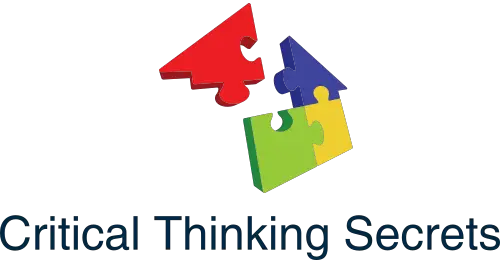In today’s fast-paced world, many individuals find themselves jumping to conclusions before fully understanding a situation. This tendency can lead to misunderstandings and poor decision-making.
The Ladder of Inference is a powerful mental model that illustrates how people move from observations to conclusions, often without realizing it. By recognizing the steps involved, one can improve their critical thinking and communication skills.

Exploring this model reveals not just the process of making inferences, but also highlights the impact of individual assumptions on decision-making. Understanding how the Ladder of Inference shapes our thoughts allows for better self-awareness and reflection.
Readers can learn how to question their thought processes and develop a more open-minded approach to discussions and decisions.
Key Takeaways
- The Ladder of Inference shows how people form conclusions from limited information.
- Improved critical thinking can lead to better communication and teamwork.
- Self-reflection helps individuals recognize their thought patterns and biases.
Understanding the Ladder of Inference

The Ladder of Inference is a mental model that helps explain how people move from facts to conclusions quickly. This model reveals the steps taken during this reasoning process. Understanding this model is crucial for better decision-making and communication.
The Origin and Importance
The concept of the Ladder of Inference was developed by organizational theorist Chris Argyris. He described how individuals often climb this ladder unknowingly, leading to quick conclusions based on limited data. Peter Senge expanded on this idea in his work, emphasizing its role in organizational learning.
Recognizing this model is important because it helps people understand their reasoning process. It can reveal why conflicts arise when individuals base their actions on misunderstandings.
By being aware of the Ladder of Inference, one can make more informed decisions and avoid unfounded beliefs.
Key Concepts and Terminology
The Ladder of Inference consists of several key rungs that illustrate the journey from data to action. Here are the essential steps:
- Selected Reality: This is the data individuals notice and focus on, often influenced by personal experiences.
- Interpretation: People interpret this data based on their own beliefs and past experiences.
- Assumptions: These interpretations lead to assumptions, which further shape beliefs.
- Conclusions: Based on assumptions, individuals draw conclusions about what is happening.
- Beliefs: Conclusions solidify into beliefs that influence future actions.
- Actions: Finally, beliefs drive actions, which can reinforce initial conclusions.
Understanding these rungs allows individuals to analyze their thought processes. By being aware of how they move through these steps, they can challenge inaccurate conclusions, leading to better outcomes.
How the Ladder Influences Our Thinking
The Ladder of Inference affects how individuals process information and draw conclusions. It highlights the steps leading from observable data to actions. Understanding these steps can reveal how biases and prior experiences shape thinking.
Identifying Cognitive Biases
Cognitive biases can distort the way people interpret data. When they look at facts, their minds may quickly jump to conclusions without careful analysis.
For example, confirmation bias leads individuals to favor information that reinforces their existing beliefs. This can cloud their judgment and make them overlook important evidence.
Another common bias is the halo effect, where an overall impression influences specific judgments, such as viewing someone’s work as better because of their likable personality.
Identifying these biases is crucial. Acknowledging their presence allows individuals to step back and reassess their conclusions based on a more objective view of the facts.
The Influence of Prior Experiences
Prior experiences play a significant role in shaping thoughts and assumptions. When facing a new situation, individuals often reference memories of similar past events.
These experiences can lead to quick conclusions based on what worked or didn’t work before.
For instance, if a person faced rejection in a previous job application, they might assume they will be rejected again without considering the new context. This habit can limit opportunities and cloud judgment.
Addressing these ingrained assumptions is essential to improve decision-making. By recognizing how previous experiences shape their perception, individuals can make more balanced judgments.
Recognizing Selected Reality
Selected reality refers to the information that a person chooses to focus on, often ignoring other relevant data. This can significantly affect how they interpret events and decide on actions.
When people filter information, they may emphasize specific facts while disregarding others, leading to misguided conclusions. For example, someone may focus only on negative feedback and ignore positive comments, which impacts their self-esteem and decisions.
Recognizing selected reality encourages individuals to evaluate their thought processes. It promotes a more comprehensive look at all available data before making conclusions. This shift can enhance clarity and lead to better outcomes in decision-making.
Practical Applications of the Ladder of Inference
The Ladder of Inference can greatly impact decision-making, communication, and relationship dynamics. By recognizing how thoughts develop and influence actions, individuals can enhance their interactions and outcomes in various situations.
Enhancing Decision-Making
Using the Ladder of Inference helps individuals refine their decision-making process. It allows them to recognize the steps they take from observing data to drawing conclusions.
By questioning assumptions and interpretations, they can base decisions on facts rather than feelings. This leads to better decisions and reduces the chance of misjudgment.
Key steps include:
- Identify the data they notice.
- Examine interpretations to avoid biases.
- Focus on facts before drawing conclusions.
Applying this method promotes personal growth and leads to more thoughtful choices.
Improving Communication and Collaboration
The Ladder of Inference also plays a significant role in effective communication and collaboration. When team members understand how they reach conclusions, they can communicate more openly.
This transparency fosters a culture of trust and respect. Team dynamics improve as individuals learn to listen and consider others’ perspectives.
Strategies to enhance communication include:
- Encourage sharing of observations.
- Facilitate discussions about interpretations.
- Practice active listening to ensure everyone feels heard.
By implementing these strategies, groups can collaborate more effectively, leading to better problem-solving.
Conflict Resolution and Relationship Building
Conflict often arises from misinterpretations in personal relationships. The Ladder of Inference assists in resolving these misunderstandings.
When individuals apply this model, they can trace back their thoughts to the original data, clarifying the source of the conflict. This method encourages empathy and understanding by highlighting different viewpoints.
To apply the Ladder in conflict resolution:
- Recognize emotions involved in conflicts.
- Discuss the facts that led to misunderstandings.
- Build mutual respect by appreciating different beliefs.
These practices contribute to stronger personal relationships and better conflict resolution strategies.
Critical Reflection and Self-Awareness
Critical reflection plays a key role in enhancing self-awareness. By recognizing personal biases, leaders can improve their decision-making and effectiveness. This section explores developing a reflective mindset and strategies to overcome blind spots.
Developing a Reflective Mindset
A reflective mindset helps individuals assess their thoughts and actions. It encourages questioning assumptions and seeking alternative perspectives.
To cultivate this mindset, one effective strategy is to create a reflection loop. This involves regularly setting aside time to consider past decisions. Ask questions like:
- What was the outcome?
- What influenced those choices?
- How can I approach similar situations differently?
Keeping a journal can also be helpful. Writing down experiences encourages deeper analysis of personal biases and mental shortcuts.
Strategies to Overcome Blind Spots
Blind spots can hinder effective leadership. They lead to inaccurate judgments based on incomplete information. To combat this, individuals should actively seek feedback from others.
Engaging in open discussions with diverse teams provides new viewpoints. Leaders can ask specific questions to uncover hidden biases.
It’s also beneficial to practice active listening during these conversations. This skill helps them fully understand other perspectives before forming conclusions.
Additionally, undergoing regular self-assessment can reveal patterns in decision-making. This includes reflecting on their own emotional responses to various situations. Acknowledging these feelings can guide better choices in the future.
Frequently Asked Questions
The Ladder of Inference helps individuals understand their thought processes and how they form conclusions. This section answers common questions about its stages, practical applications, and ways to improve decision-making.
What are the stages involved in the Ladder of Inference model?
The Ladder of Inference includes several stages. It starts with data and experiences observed. From there, individuals select specific data to focus on, which leads to interpretations. This progresses to making conclusions, forming beliefs, and finally taking actions based on those beliefs.
Can you provide a practical example of the Ladder of Inference at work in a business context?
In a business setting, an employee notices a colleague arriving late. They might focus on this behavior and infer that the colleague is not committed. This could lead to a belief that the colleague is lazy and result in actions like refusing to collaborate, impacting team dynamics.
How does the Ladder of Inference contribute to conflict in interpersonal relationships?
Often, people jump to conclusions about others’ intentions. For example, one might assume a friend’s lack of response indicates disinterest. This inference can lead to misunderstandings and conflict, as the belief may not reflect the friend’s actual circumstances.
What strategies can be employed to counteract the Ladder of Inference and make more balanced judgments?
To counteract this, individuals can practice mindfulness. They can pause to reflect on the data before drawing conclusions. Engaging in open communication and asking clarifying questions also helps in reducing assumptions and allows for more balanced views.
How does the Ladder of Inference affect decision-making processes in educational settings?
In educational environments, the Ladder of Inference can shape how students interpret their peers’ actions. Misunderstandings may arise from jumping to conclusions about a teacher’s feedback or a classmate’s comments. This can impact students’ motivation and willingness to participate.
What are some ways to teach students about the Ladder of Inference to enhance critical thinking skills?
Educators can use role-playing exercises to illustrate the Ladder of Inference. They can also discuss scenarios where assumptions lead to conflict.
Discussing scenarios where assumptions lead to conflict can also be effective. Encouraging students to share their thought processes fosters critical thinking. It also helps them recognize their own inference patterns.





